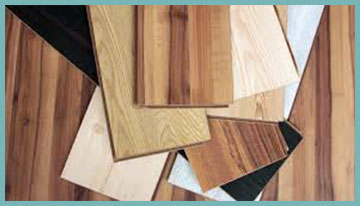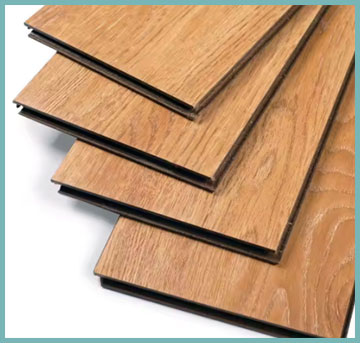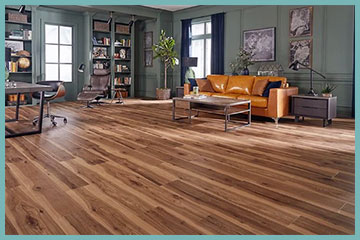I’ve been renovating my home, and choosing the right flooring was a big decision. After narrowing it down to Quick-Step and Pergo, two leading laminate flooring brands, I wanted to understand their strengths, weaknesses, and how they fit my lifestyle.
This article explores Quick-Step and Pergo, comparing their features, durability, and aesthetics to help you make an informed choice. With a detailed pros and cons analysis, personal insights, and a comparison table, I’ll share what I learned to guide you toward the perfect flooring for your home.
A Brief Comparison Table
| Feature | Quick-Step | Pergo |
|---|---|---|
| Material | Engineered wood with HDF core, real wood top layer | Laminate with high-density fiberboard core |
| Durability (AC Rating) | AC4, suitable for residential and light commercial use | AC4-AC5, handles medium to heavy commercial traffic |
| Water Resistance | NatureTek Plus with WetProtect, lifetime warranty | WetProtect and SpillProtect, up to 30 hours |
| Installation | Uniclic system, DIY-friendly | Click-lock system, easy for DIY |
| Aesthetic Variety | Over 100 styles, realistic wood textures | Over 100 hues, wood and stone imitations |
| Warranty | Lifetime residential, 5-10 years commercial | 25-33 years residential, robust warranties |
| Cost per Sq. Ft. | $2.50-$4.50 | $2.00-$4.00 |
| Eco-Friendliness | FloorScore certified, low-VOC | FloorScore certified, uses recycled hardwood |
| Maintenance | Easy, sweep and mop with mild cleaner | Simple, wipe with damp cloth |
My Experience With Quick-Step

When I decided to install Quick-Step in my living room, I was drawn to its reputation for authentic wood aesthetics and durability.
I chose the NatureTek Plus line, specifically the Colossia collection in Rainforest Oak, for its rich, warm tones.
The installation process was a breeze thanks to the Uniclic system.
With just a few tools, I snapped the planks together, and within a day, my 400-square-foot space was transformed.
The floor felt solid underfoot, and the milled bevel edges gave it a premium, hardwood-like appearance.
What stood out was the realistic texture. The embossed surface mimicked natural oak so well that guests often assumed it was solid hardwood. I also appreciated the WetProtect technology, which gave me peace of mind when my dog spilled water from his bowl.
A quick wipe, and the floor was fine—no warping or swelling. Cleaning has been straightforward; I sweep daily and use a damp mop with a mild cleaner weekly, and the floor still looks pristine after six months.
However, the cost was a bit of a shock. At $4 per square foot, it stretched my budget more than I expected. I also noticed that in high-humidity weeks, the planks expanded slightly, creating tiny gaps. While not a major issue, it’s something to consider if you live in a humid climate.
Overall, Quick-Step delivered a luxurious look and solid performance, but it required careful planning to justify the price.
Read More: My Thoughts On Gemcore Flooring
Pros Of Quick-Step
- Authentic Wood Appearance: Quick-Step’s NatureTek lines, like Leuco and Colossia, offer over 100 styles with realistic wood grains and textures, closely resembling solid hardwood.
- Innovative Uniclic System: The patented Uniclic locking mechanism makes installation fast and secure, ideal for DIYers like me who want a professional finish without hiring help.
- Water Resistance: The NatureTek Plus range features WetProtect technology, backed by a lifetime guarantee against water damage, perfect for kitchens or pet-friendly homes.
- Durability: With an AC4 rating, Quick-Step handles high-traffic residential areas and light commercial spaces, resisting scratches and fading effectively.
- Eco-Friendly Certification: FloorScore certification ensures low-VOC emissions, making it a healthier choice for indoor air quality, which was a priority for my family.
- Lifetime Warranty: The lifetime residential warranty covers wear and fading, giving me confidence in the floor’s longevity, though commercial use is limited to 5-10 years.
- Wide Style Range: From light White Wash Oak to dark Chestnut Oak, the variety of colors and plank sizes suits diverse design preferences, making it versatile for any room.
Quick-Step’s strengths lie in its ability to blend aesthetics with practicality. The realistic wood look elevated my living space, and the easy installation saved me time and money. The water resistance was a game-changer, especially with pets, and the eco-friendly aspect aligned with my values. However, the higher cost and slight sensitivity to humidity are worth noting, but for a premium look, Quick-Step delivers.
Cons Of Quick-Step

- Higher Cost: At $2.50-$4.50 per square foot, Quick-Step is pricier than many laminates, which can strain budgets for larger projects like mine.
- Humidity Sensitivity: Despite water resistance, engineered wood can expand in high humidity, causing minor gaps, which I noticed during humid summer weeks.
- Limited Commercial Warranty: The 5-10 year commercial warranty is shorter than residential, making it less ideal for heavy commercial use.
- Not Fully Waterproof: While WetProtect handles spills, prolonged water exposure, like flooding, isn’t covered, so it’s not suited for bathrooms or basements.
- Installation Learning Curve: Although Uniclic is DIY-friendly, first-timers might struggle with precise cuts or alignment, as I did in corners.
- Availability Issues: Some styles, like those in the NatureTek Select line, are exclusive to retailers like Lowes, limiting options if you shop elsewhere.
- Sound Underfoot: The floor can feel slightly hollow compared to hardwood, which I noticed in quieter moments, though it’s not a dealbreaker.
Quick-Step’s drawbacks don’t overshadow its benefits, but they’re worth considering. The cost was a hurdle for me, and the humidity-related expansion was a minor annoyance. If you’re in a high-moisture area or need a budget-friendly option, these cons might push you toward alternatives. Still, for a balance of style and durability, Quick-Step holds up well.
My Experience With Pergo

For my kitchen, I opted for Pergo Outlast Plus in Riverbend Oak, hoping for durability and moisture resistance.
The click-lock system made installation as easy as Quick-Step, and I finished the 300-square-foot space in under a day.
The floor’s photorealistic wood grain looked convincing, though it lacked the warmth of Quick-Step’s engineered wood.
I was impressed by the WetProtect technology, which handled a spilled glass of juice without issue—just a quick wipe, and no damage.
Cleaning is a breeze; I use a damp cloth with a non-abrasive cleaner, and the floor stays spotless. The AC5 rating gave me confidence in its durability, especially with heavy foot traffic and occasional chair scrapes.
However, I noticed a slight shine in sunlight, which betrayed its laminate nature. Also, when my dog ran across it, it felt a bit slippery, which wasn’t ideal. At $2.50 per square foot, it was more budget-friendly than Quick-Step, but the hollow feel underfoot was noticeable compared to hardwood.
Pros Of Pergo
- Affordability: Priced at $2.00-$4.00 per square foot, Pergo is more budget-friendly, making it accessible for larger projects like my kitchen.
- High Durability: With AC4-AC5 ratings, Pergo handles heavy traffic, ideal for busy households or even medium commercial spaces.
- Moisture Resistance: WetProtect and SpillProtect technologies protect against spills for up to 30 hours, perfect for kitchens or laundry rooms.
- Easy Installation: The click-lock system is DIY-friendly, requiring minimal tools and allowing quick setup, which saved me time.
- Wide Aesthetic Range: Over 100 styles, from light oaks to stone imitations, offer versatility for various decor themes, fitting my modern kitchen vibe.
- Low Maintenance: Cleaning is simple with a damp cloth, and the sealed surface resists stains, making it practical for daily use.
- Robust Warranties: 25-33 years for residential use, with strong customer support, gave me peace of mind for long-term performance.
Pergo’s affordability and durability make it a strong contender. The moisture resistance was a lifesaver in my kitchen, and the variety of styles let me match my decor perfectly. For budget-conscious homeowners seeking a reliable, low-maintenance floor, Pergo is a solid choice.
Cons Of Pergo
- Less Authentic Feel: The laminate lacks the warmth and texture of real wood, feeling slightly hollow, which I noticed compared to Quick-Step.
- Shiny Finish: Some planks, like my Riverbend Oak, have a glossy shine in sunlight, revealing their synthetic nature.
- Slippery Surface: The smooth surface can be slippery for pets or kids, as I found with my dog’s occasional skids.
- No Refinishing Option: Unlike hardwood, Pergo can’t be sanded or refinished; significant damage requires plank replacement.
- Water Damage Risk: While moisture-resistant, prolonged water exposure can swell the fiberboard core, ruining the floor.
- Quality Complaints: Some users report issues like warping or seam separation, though I haven’t experienced this yet.
- Limited Eco-Transparency: While FloorScore certified, Pergo’s eco-credentials are less emphasized than Quick-Step’s, which concerned me slightly.
Pergo’s synthetic feel and glossy finish were minor downsides for me, and the pet-related slipperiness was a concern. If authenticity or eco-friendliness is a priority, these cons might steer you elsewhere. Still, its affordability and ease of use make it a practical option.
Comparison With Other Brands
- Quick-Step vs. Mohawk: Mohawk, which owns both Quick-Step and Pergo, uses similar Uniclic technology but focuses on eco-friendly southern pine cores. Quick-Step’s aesthetics and water resistance outshine Mohawk’s standard lines, though Mohawk’s sustainability efforts are stronger.
- Pergo vs. Shaw: Shaw’s Repel collection offers comparable water resistance and durability (AC4), but Pergo’s broader style range and lower cost give it an edge for budget-conscious buyers like me.
- Quick-Step vs. Armstrong: Armstrong emphasizes style diversity and moisture resistance, but Quick-Step’s Uniclic system and lifetime warranty make it more reliable for DIY installations.
- Pergo vs. AquaGuard: AquaGuard’s 100% waterproof laminate surpasses Pergo’s moisture resistance, but Pergo’s higher AC ratings and affordability make it more versatile for high-traffic areas.
- Quick-Step vs. Tarkett: Tarkett offers similar style variety but lacks Quick-Step’s WetProtect technology, making Quick-Step better for spill-prone areas.
- Pergo vs. TrafficMASTER: TrafficMASTER is cheaper with an AC3 rating, but Pergo’s superior durability (AC5) and aesthetic options make it a better long-term investment.
- Quick-Step vs. LL Flooring: LL Flooring’s Autumn Cider Oak has thicker planks for resilience, but Quick-Step’s realistic textures and easier installation appealed more to me.
Both brands compete well, but Quick-Step leans toward premium aesthetics, while Pergo excels in affordability and durability. Your choice depends on whether you prioritize luxury or budget.
Read More: My Thoughts On Lux Flooring
Frequently Asked Questions (FAQ)
It depends on your needs. Pergo is more affordable and durable (AC4-AC5), ideal for high-traffic areas, while Quick-Step offers a more authentic wood look and better water resistance.
AquaGuard’s 100% waterproof laminate or Shaw’s Repel collection may outperform Pergo in moisture-heavy areas, but Pergo’s cost and durability are hard to beat.
Pergo Outlast+ and Quick-Step NatureTek Plus are top-rated for their durability, water resistance, and aesthetics, with Pergo slightly edging out for affordability.
Yes, Quick-Step is high-quality, with an AC4 rating, lifetime warranty, and realistic wood textures, making it a premium choice for style and durability.
Conclusion: Quick-Step Vs. Pergo
Choosing between Quick-Step and Pergo comes down to your priorities. If you want a luxurious, hardwood-like floor with strong water resistance, Quick-Step’s NatureTek Plus is worth the investment. If budget and durability matter most, Pergo’s Outlast+ delivers excellent value.
I found Quick-Step’s authentic feel perfect for my living room, while Pergo’s affordability suited my kitchen. Consider your space, lifestyle, and budget—you can’t go wrong with either, but one will likely fit your needs better. Happy flooring!
